An unidentified man (left), Lorna Luft (center), and her half-sister Liza Minnelli in an undated photograph taken by Andy Warhol. An exhibition comprising 44 Polaroids and 21 photos by Warhol is at the Pennsylvania Academy of the Fine Arts through Sept. 12.
Read more: http://www.philly.com/philly/entertainment/20100725_Art__Warhol_s_photographs_at_the_Pa__Academy.html#ixzz0uhEhb0u6
Watch sports videos you won't find anywhere else

Posted on Sun, Jul. 25, 2010
By Edward Sozanski
Contributing Art Critic
Andy Warhol might have been more an inspired graphic designer and cultural barometer than an artist of elevated ideals, but as a prophet, social historian, and validator of trends he was a certified genius.
In Warhol's hands, low art became high art, lowering a standard that had endured for centuries. In Warhol's method, the artist as observer and interpreter became the artist as voyeur.
The camera enabled Warhol to establish this new paradigm in his factory-style art-production process. For the portraits that he transformed into silk-screened paintings, he relied on his trusty Polaroid. His night-hawking celebrity voyeurism depended on the more casual and discreet use of a 35mm.
By the time of Warhol's untimely death at 58 in 1987, years of clicking away had built up a massive archive of more than 60,000 Polaroids and black-and-white prints. Two years ago, the Andy Warhol Foundation for the Visual Arts created a "photographic legacy program" under which it donated blocs of the master's images to museums, galleries, and art collections across the country.
The Pennsylvania Academy of the Fine Arts received 101 Polaroids and 50 photographic prints, the source for a small exhibition comprising 44 of the former and 21 of the latter. The show is installed on the second floor of the Hamilton building, next to the Vogel donation (discussed in this space last week).
This is an exhibition to die for only if one is an unqualified Warholite or an avid consumer of celebrity culture. Both groups of images affirm the artist's fascination with socialites, entertainers, and "celebrities" - in many cases, people famous for being famous - an appetite that now seems almost universal among the general public.
The Polaroids are essentially mug-shot portraits, taken in a controlled studio environment; they look like professional studies for more formal likenesses. They aren't especially revealing of character, only of style and glamour.
But Warhol had an instinct for images of this kind, which, on a purely technical level, make one nostalgic for the warm, chromatic lushness of the Polaroid color palette.
Portrait subjects include pop singer Paul Anka , legendary dancer Martha Graham , actress-singer Pia Zadora , and sports stars Dorothy Hamill and Wayne Gretzky.
Habitués of the more casual, "roving-photographer" party snaps range from museum curator Henry Geldzahler to singers Liza Minnelli and Neil Sedaka to artists Eric Fischl and Keith Haring to the designer Halston.
The party pictures, too, are professionally composed; no one can accuse Warhol of being an amateur. As to whether these photos served his art - he referred to making them as work - one can only speculate.
The camera helped to reinforce his membership in the social elite, and it created a market for his portraits and a constituency for his art generally. Equally important, it provided camouflage for a person who hardly seemed the type to mingle comfortably with the Southampton set. As a photographer, Warhol could join the group while remaining apart from it.
In any event, these photographs - Polaroids and otherwise - document a time and a place that might not, in retrospect, seem particularly significant. As Warhol once commented: "My idea of a good picture is one that's in focus and of a famous person doing something unfamous."
Not exactly Beaumont Newhall, and perhaps only a put-on, but the comment is consistent with the legend of America's master of banality.
Quietly beautiful porcelains. The plethora of exhibitions organized in connection with the recent national ceramics conference in Philadelphia demonstrated that aesthetic minimalism, expressed by emphasizing form and surface over decorative flair or narrative exuberance, has become a minority position in American ceramics.
Yet purity of elemental form still has much to recommend it, and nowhere is this quality more succinctly and eloquently expressed than in traditional Korean clay art.
We can appreciate both the clarity and the understated beauty of the Korean minimalist philosophy in a small but intense exhibition in the Perelman building of the Philadelphia Museum of Art.
The museum's Korean-art curator, Hyunsoo Woo, has selected 16 examples of historical and contemporary works, most from the collection, some borrowed.
She has given the objects added luster and resonance by pairing them with 20 photographs of Korean pots by contemporary photographer Bohnchang Koo. The most demonstrative of these are large color prints in which the pots are immersed in a hazy pink aura.
Playing the pots against the photographs, or vice versa, allows each medium to reinforce the impact of the other. The pots in the vitrines are concrete and tactile, yet those in the photographs are ghostly and ethereal. Each impression is a true one.
The museum describes the ware - narrow-necked bottles, bowls, dishes, and specialty items like a water-dropper - as "white" porcelain, but in fact few pieces appear even close to white. Coloring is subtle, ranging from pale green to celadon gray to bluish tints.
Beginning in Korea's Joseon dynasty (1392-1910), white was the ceramic ideal, typified by a 15th-century dish in the show. Color creeps in gradually over the next six centuries, but it's never dominant. Most of the pieces appear more white than anything else, which tends to accentuate the clean lines and smooth surfaces of the forms.
Koo spent four years photographing similar wares in Korean and foreign museums; the result was a series called "Vessels," from which the pictures in this show were taken. His technique, especially the pinkish lighting, sublimates color to form, magnifying the formal integrity of each piece.
The photos might remind some viewers of still lifes by American painter William Bailey or Italian painter Giorgio Morandi, whom Koo cites an an influence. His goal in the "Vessels" series, he says, was to show "the porcelain itself, without painting or patterns." In that he has succeeded admirably.
The hidden irony of the photographs, according to Koo, is that "the most wonderful collections of Korean white porcelain are in Japan," which conquered and colonized Korea between 1910 and the end of World War II in 1945. Through the work of current artists like Kim Yikyung and Lee Gee-Jo, the exhibition indicates that Koreans have reclaimed their centuries-long dedication to the primal allure of plain white.
--------------------------------------------------------------------------------
Art: Celebrity Snaps
"Andy Warhol: Polaroids and Black and White Prints" continues in the Hamilton building of the Pennsylvania Academy of the Fine Arts, Broad and Cherry Streets, through Sept. 12. Hours: 10 a.m. to 5 p.m. Tuesdays-Saturdays and 11 a.m. to 5 p.m. Sundays. Admission: $15 general, $12 for visitors 60 and older and students with I.D. and visitors 13 through 18. Information: 215-972-7600 or www.pafa.org.
"Plain Beauty" continues in the Perelman Building of the Philadelphia Museum of Art, Fairmount and Pennsylvania Avenues, through Sept. 26. Hours: 10 a.m. to 5 p.m. Tuesdays-Sundays. Admission: $8 general, $7 for visitors 65 and older, $6 for students with I.D. and visitors 13 through 18. Information: 215-763-8100, 215-684-7500 or www.philamuseum.org.
--------------------------------------------------------------------------------
Contact contributing art critic Edward J. Sozanski at 215-854-5595 or esozanski@phillynews.com. Read his recent work at http://go.philly.com/edwardsozanski.
Read more: http://www.philly.com/philly/entertainment/20100725_Art__Warhol_s_photographs_at_the_Pa__Academy.html#ixzz0uhDX6YMq















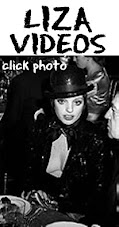




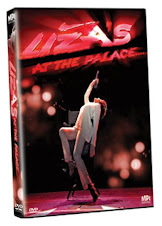


























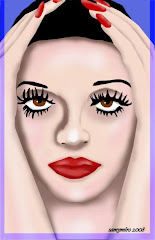
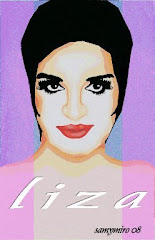


























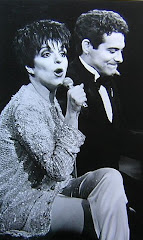


































1 comment:
Isn't this Desi Arnaz, Jr., to the left?
Post a Comment